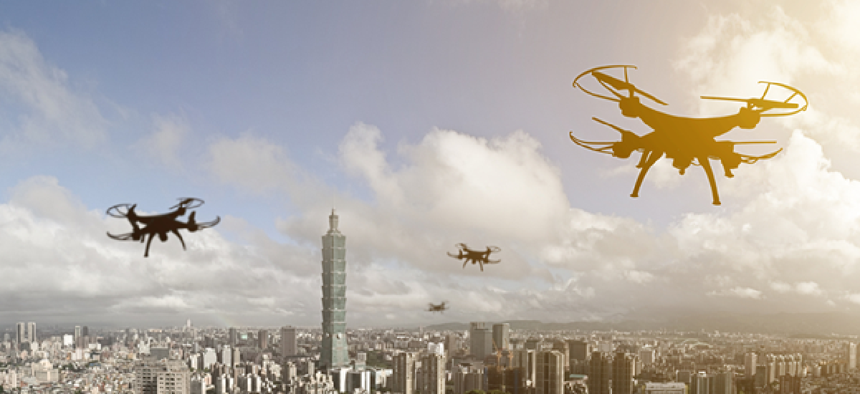Bringing drones into a smart city network


Connecting state and local government leaders
San Diego is combining its drone research with smart city efforts.
San Diego is in the midst of a tech convergence. It is working to build what it calls the nation’s largest smart city network, and it also was selected for the U.S. Department of Transportation's UAS Integration Pilot Program.
The city plans to bring these two efforts together, coordinating unmanned aerial systems with the smart city infrastructure it is building.
The sensor network that can detect traffic trends detect gunshots, find open parking spaces, measure air quality and track traffic flow of both vehicles and pedestrians is being developed in partnership with GE’s Current, which is also deploying networks in Portland, Ore., and Atlanta.
As part of the UAS Integration Pilot Program, San Diego wants to bring information collected by drones into its smart city network.
“One use case is deploying a UAS to capture data that’s going on within the public, so traffic trends, or how many pedestrians travel at one area in a given point in time, where potholes may be located,” said Harrison Andrew Pierce, the homeland security coordinator for the City of San Diego’s Office of Homeland Security.
Austin Ashe, the general manager of Smart Cities at Current by GE, said his company is working with San Diego, and that the drone project is connected to their efforts.
The city plans to use the Current application programming interfaces to communicate with the drones, but it is "still in the development phase as far as software, back-end stuff goes,” Pierce explained in an interview.
San Diego's smart city project has a number of other partners, one of which is ShotSpotter, which makes acoustic sensors that can detect gunshots and triangulate the location of the shooter. The city wants to see if ShotSpotter precision can be increased if it is mounted on drones, which could also provide a live video feed of the area where the shots were detected.
First responders would benefit from live video feed, and the city will be working with o make it a reality. Drone operators typically view a video feed from a drone on a mobile device, which allows them to see where the drone is headed. Cape backs up that video feed, sends it to the cloud and can redistribute it to responders using mobile devices.
San Diego will also be working with AT&T, Qualcomm and Intel on using drones as temporary cell towers to provide more 4G LTE coverage during large events that stress the bandwidth of the current infrastructure.
AT&T demonstrated this ability, which it calls a flying COW (cell on wings), in Puerto Rico after Hurricane Maria crippled the island’s communications network.
“We’re deploying that same logic and technology in the downtown urban area,” Pierce said.

NEXT STORY: At Crossroads for Dockless Bikeshare, Seattle Chooses to Go Big




